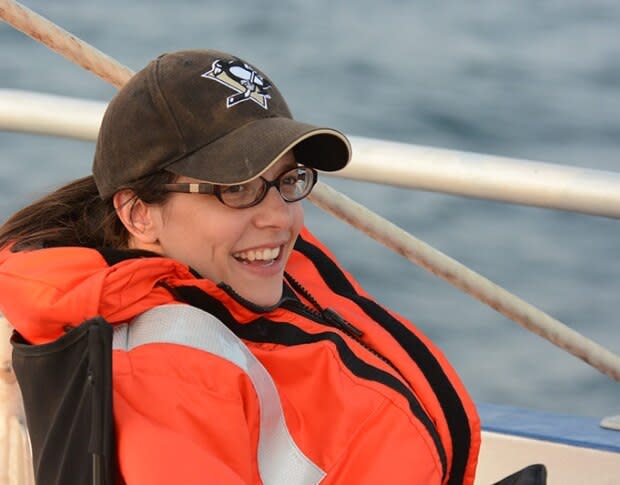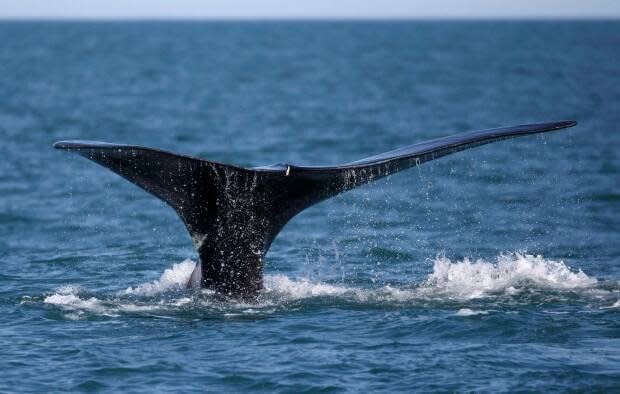Underwater glider helps save North Atlantic right whales from ship strikes
Technology developed with the help of a professor at the University of New Brunswick Saint John is already helping to protect endangered North Atlantic right whales in the Gulf of St. Lawrence this summer.
Kim Davies helped develop an underwater acoustic glider that can monitor for the whales. Within a few hours of its launching earlier this summer it was already doing its job.
"So within a few hours of the glider being deployed up in the Laurentian Channel, it detected right whales for the first time in the deployment, and it has since detected right whales on two additional days," said Davies, an assistant professor in biological sciences at the university,
The unmanned gliders move back and forth through the water by changing buoyancy. The machine runs quietly and with the little wings attached, it moves through the water in a saw-tooth pattern.
Davies said the glider the researchers are using for Transport Canada has a hydrophone sensor attached, which is recording sounds in the oceans.
"So it's recording whale sounds."
A software system then processes the acoustic data and picks out the different whale calls.
"We use this system to monitor for North Atlantic right whales."
Data sent onshore for processing
Davies said the glider surfaces every few hours and sends data to onshore locations.
"When a glider detects a North Atlantic right whale I send that information to Transport Canada so that they can take action to reduce the speed of ships in that area."

A 10-knot speed limit was issued within an hour, said Davies. The speed reduction remains in effect for 15 days, and in this case has continued because the right whales were detected twice more.
"We've had the clock start over twice since that first detection."
Until 2017, Davies said, there was no dynamic management for right whales in Canada. Then Transport Canada recognized a big problem with whales being struck by ships travelling through the Gulf of St. Lawrence.
"It was really hard to pinpoint where the animals were dying, and they wanted to avoid having all ships go 10 knots all the time," Davies said.
Until the gliders were put into use, Transport Canada relied on aerial surveillance, which is not only expensive but also affected by the weather.
"The idea with the autonomous platform, the glider, is it can stay out in all kinds of weather, it's persistently monitoring 24 hours a day, seven days a week," she said. "The efficiency of the survey effort has increased substantially."
2 gliders in use
Davies said two gliders are detecting right whales in the southern area of the gulf, where fishing is going on, and in the shipping lanes of the Laurentian Channel, which the whales are known to pass through.
"We expect there to be fewer detections in the Laurentian Channel than in the southern Gulf of St. Lawrence."
While the gliders have been in use since 2014 to help search for right whales, Davies said the objective this year changed. Now the areas travelled and favoured by the endangered species have been found, the information can be used to help reduce the risk for them.

"We're trying to learn from the live animals about where the risk is, where these live animals are distributed, where they are encountering ships and where is there lots of co-occurrence between right whales and ships."
Davies said so far there have been no reported deaths of right whales this summer.
Last year, 10 right whales were found dead in Canadian and United States water. There are around 400 North Atlantic right whales remaining in the world.


